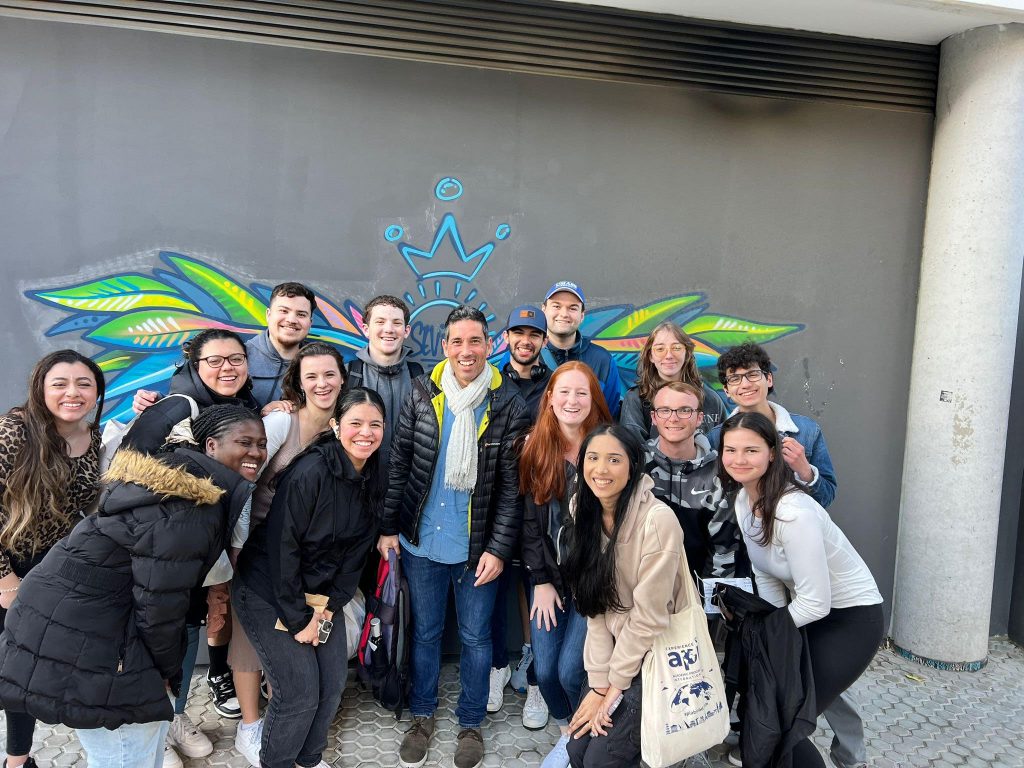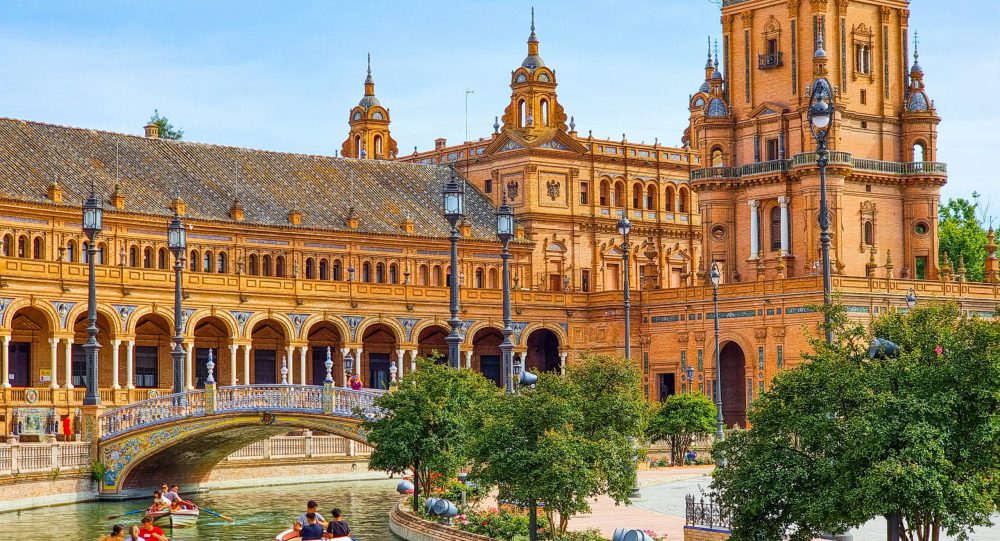Brief Introduction:
March 5th marks the fourth day of travels for UMass Lowell students studying abroad in Seville, Spain. This day took a detour compared to previous ones, being the first lecture the UMass Lowell students experienced in Seville. The students received a brief tour of, “El Universidad de Sevilla” which led to their first lecture speaking on Moorish influence in Seville. The students then took time to fellowship with their peers and explore the city as they took a lunch break. It was afterward, came together again to receive a guided tour of “Plaza de Toros” in Seville. Enjoy the following blog post!
Tour of the University of Seville:
Following an incredible first three days in Spain UMass Lowell students were able to experience a guided bike tour of Seville, visit the Royal Alcazar, experience an API-hosted group welcome dinner, complete a Spanish [Lent-style] cooking lesson, and visit the “Catedral de Sevilla.” It was a fantastic start to our travels in Seville, Spain.

Day Four of studying abroad led us to our first lecture in Seville. A lecture on “Moorish Influence in Seville: History to Present Day with Jose Maria Toro.” The day began with us meeting our lovely API Resident Director (Juan Calvo Salazar) at one of our main meeting points in Seville, “Puerta de Jerez.” Once we all came together we were guided to the University of Seville where we met our guest lecturer (Jose Maria Toro). He greeted us and gave us a brief tour of the university’s main building which was originally an old tobacco factory that was then converted into what we have today (the University of Seville). He pointed out many small details hidden within the architecture that showed the tobacco factory roots of the building.
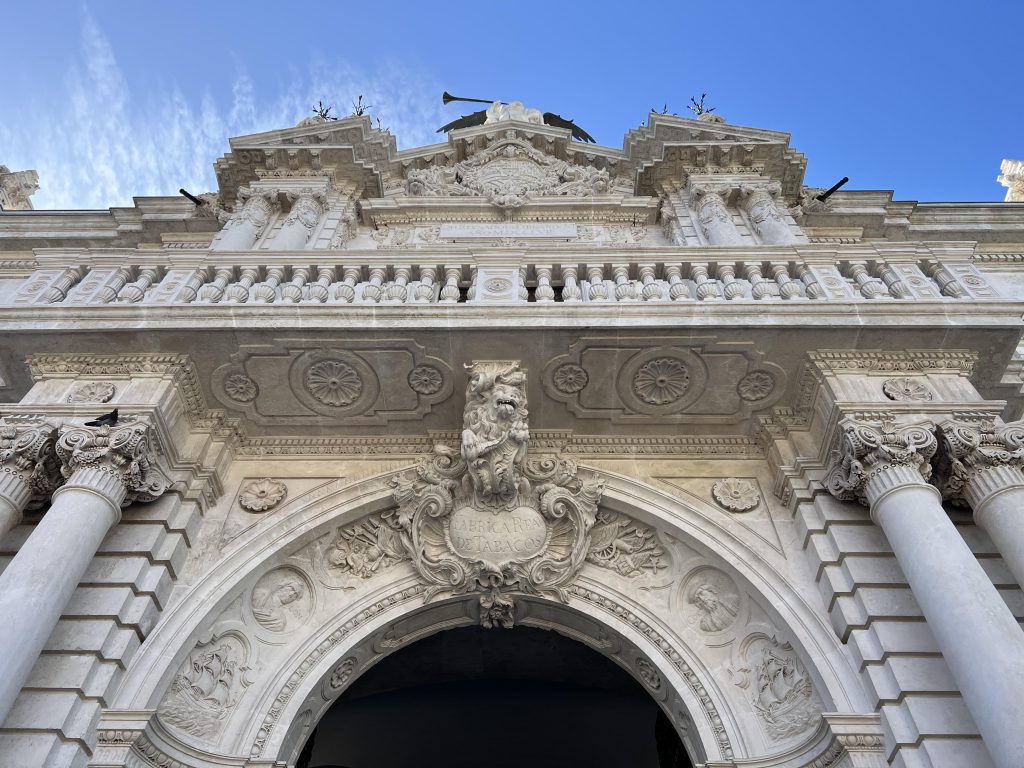
Moorish Influence Lecture:
The lecture component of the tour spoke about Moorish [Arabic/Islamic] influence in Seville’s architecture. He pointed out examples mainly from the Royal Alcazar and other Christian buildings in Seville. One of the main points noted through the lecture was the beauty of Moorish architecture and how even though Moorish rule is long gone in Spain [Iberian Peninsula] the Christian rulers who took over appreciated and enjoyed the Islamic architecture so much that they built Christian religious sites that incorporated the previous Islamic architecture.
Although the religious messages of the new Christian rulers and the previous Moorish rulers differ they did not cause any issues whatsoever when it came to designing cathedrals and palaces. Moorish architectural design incorporates geometric shapes and patterns which gives an aesthetically pleasing look. Since geometric/pattern designs leave a lot to be desired, the Moors responsible for designing the mosques (when they previously ruled) included many intricate and beautiful inscriptions on the walls and arches throughout the buildings.
The remnants of the beauty that the Moors gave to much of Seville’s architecture are still present today as instead of being entirely eradicated they were appreciated and even sought after as templates for the Royal Palace in Seville. Overall, the lecture taught us that Moorish influence makes up a huge part of Seville’s identity as many buildings within the city attempt to replicate Moorish-era architecture, and even some incorporate old mosques and Moorish-style buildings into their own.
Lunch break:
After the lecture on Moorish influence in Seville, we had an approximately 2-hour lunch break where along with some students I went to try a traditional Spanish dish called “Arroz negro” (translates to “black rice” and it is a traditional Spanish Paella). This dish incorporated many types of seafood such as mussels, shrimp, and squid! The dish is called “Arroz negro” because the rice is actually black, this is due to squid ink being one of the main components of the dish. Along with helping to season the rice, it gives a rich seafood flavor that doesn’t overpower the dish but complements the seafood elements already present. Overall, it brought me closer to two students I am currently studying abroad with and I always appreciate the time outside of the scheduled events as it gives me time to socialize with my peers.
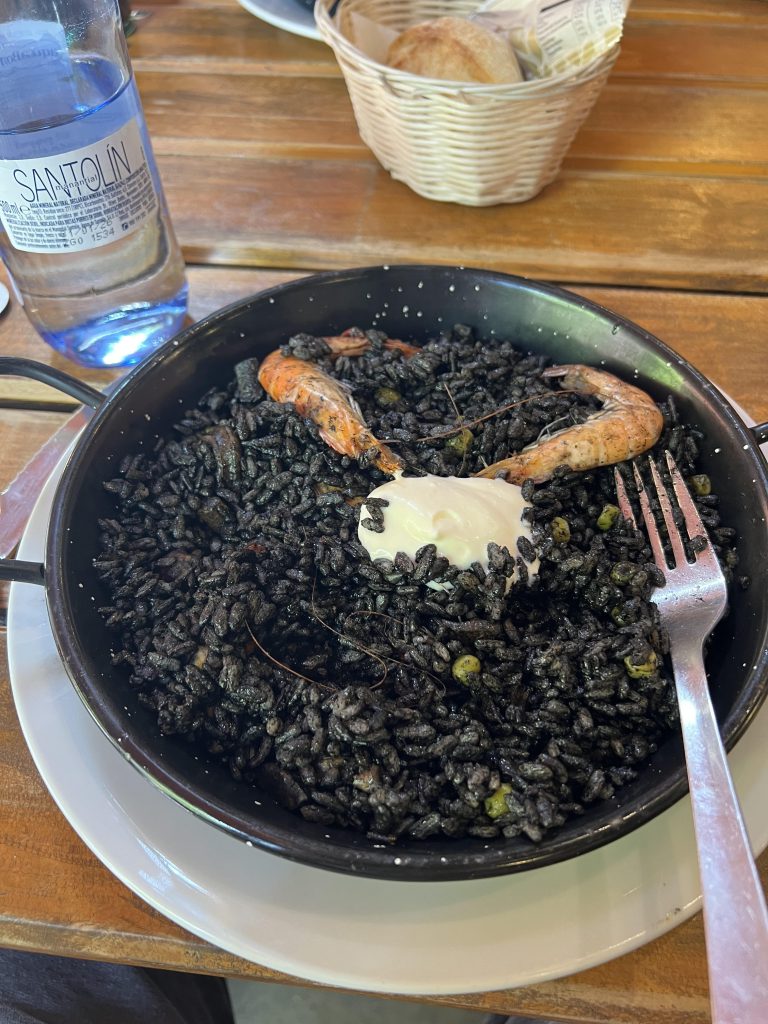
Plaza de Toros:
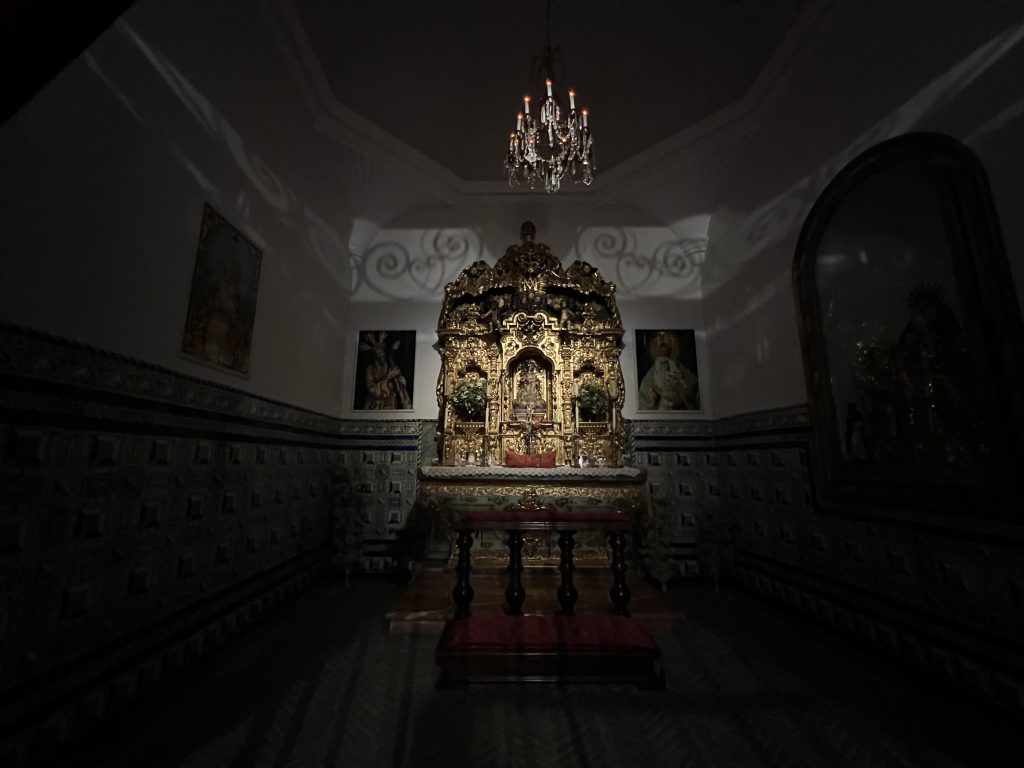
Our day ended with a guided tour of the “Plaza de Toros” in Seville. This building is where the matadors (bullfighters) come together to host the bullfighting events. Although controversial in recent years the building is still completely active with an award ceremony event coming up in the next two weeks hosted in Seville! When we entered the building we were given a glimpse into the history and preparations the matadors take before going out to perform. One key preparation that stuck out to me was the chapel where the matadors pray before performing (as bullfighting is extremely dangerous). Overall, although I do not support bullfighting personally, I can appreciate the history behind the activity and I now have a deeper understanding of how it became a part of Spanish society and continues to today.
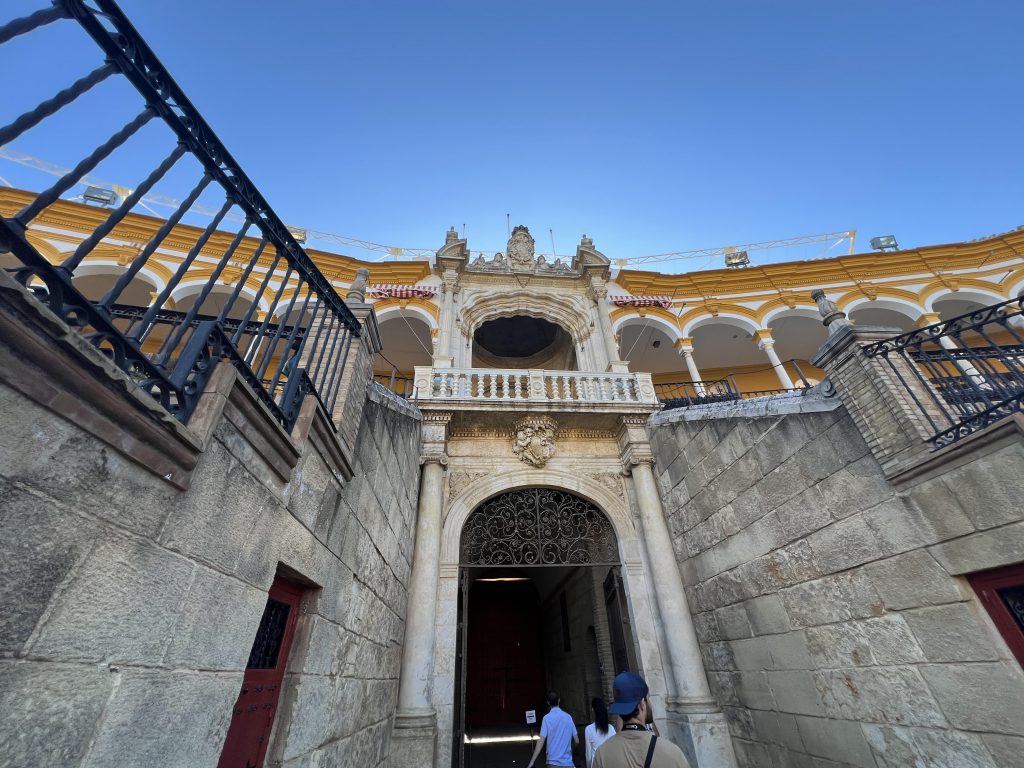
Ending remarks:
Although my time studying abroad in Seville is temporary, I will never forget this experience. Through these travels, I was able to make great friends and I am excited to be able to come back to UMass Lowell knowing that they all study at the same university I attend!
